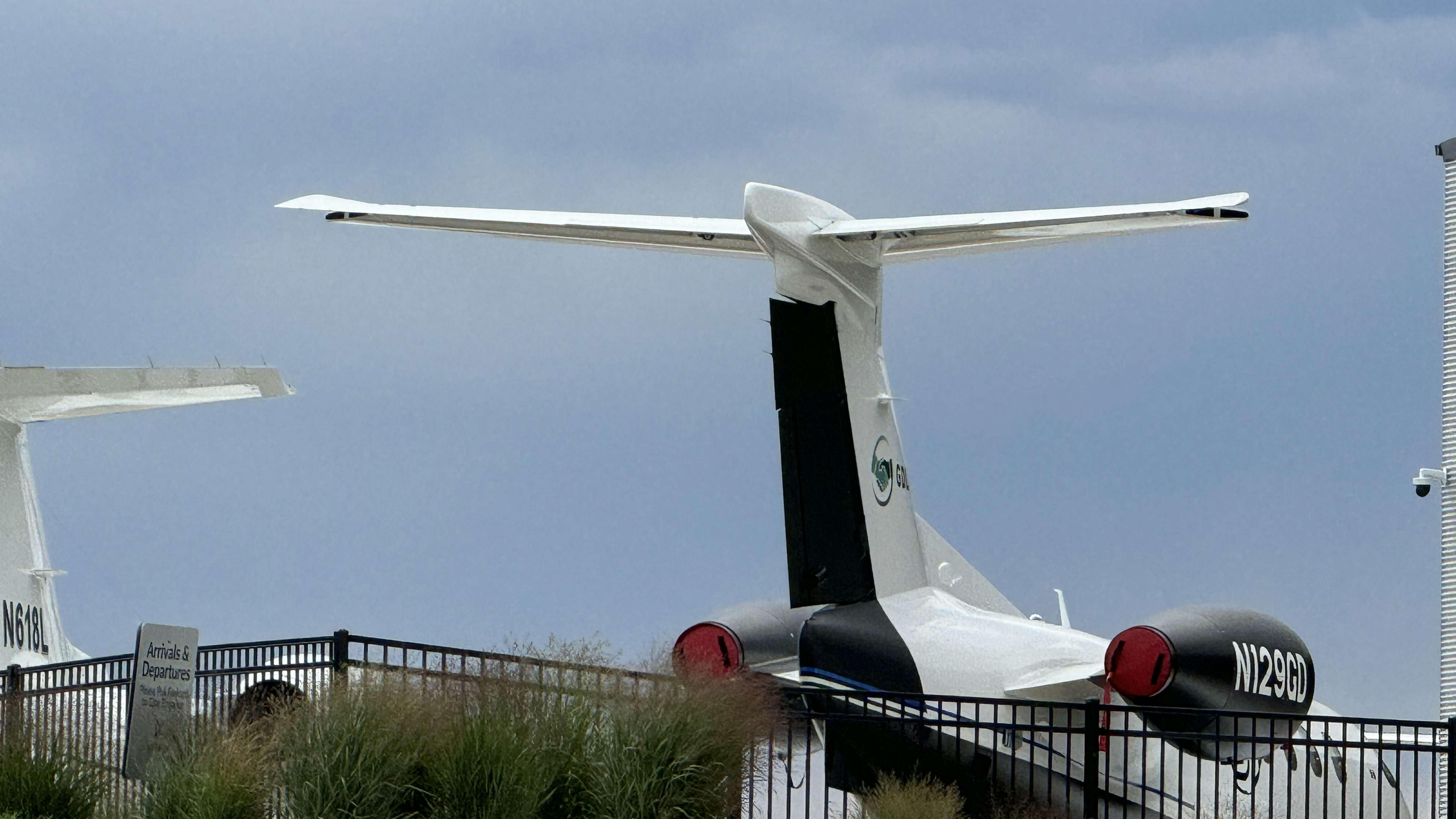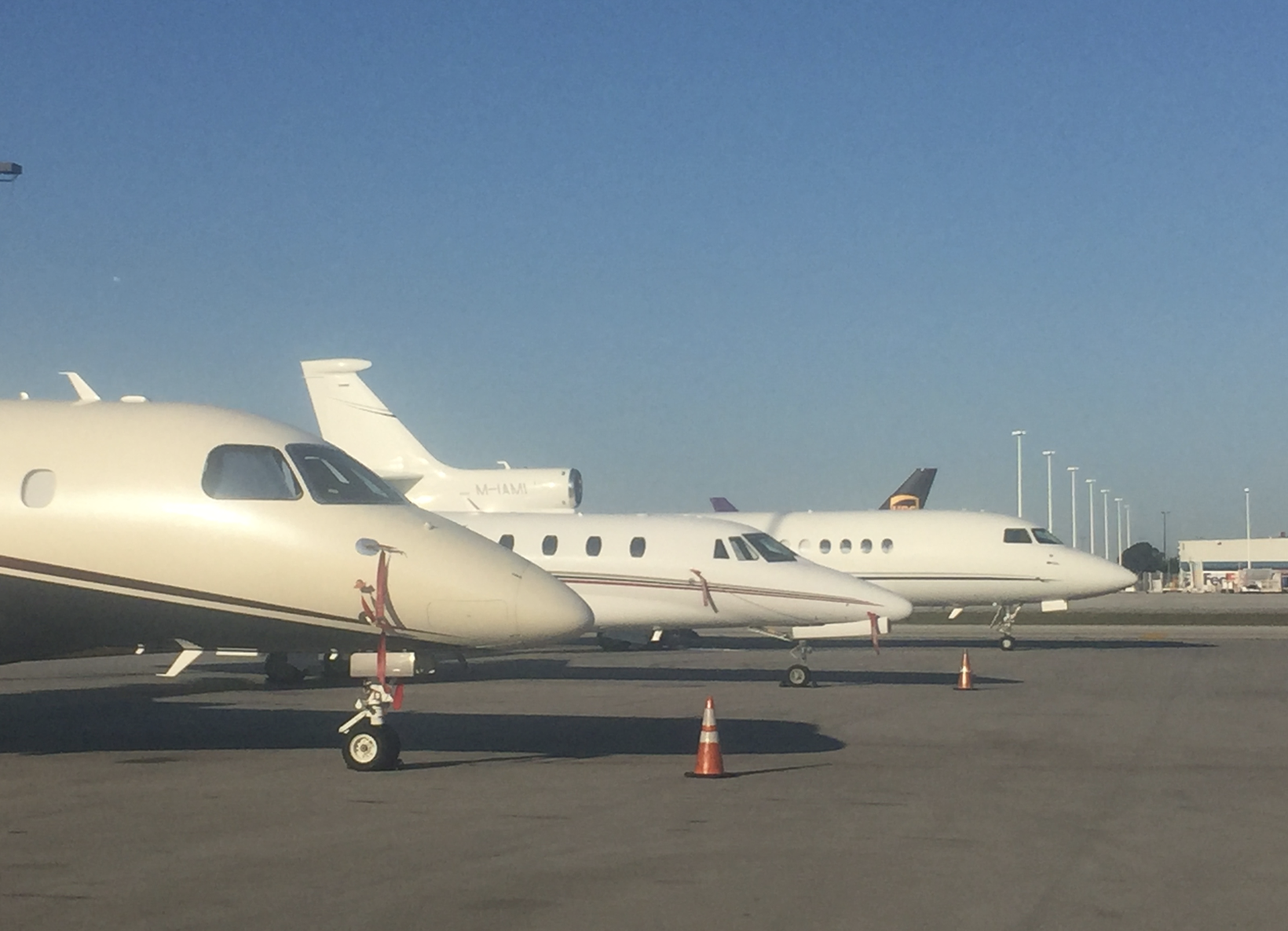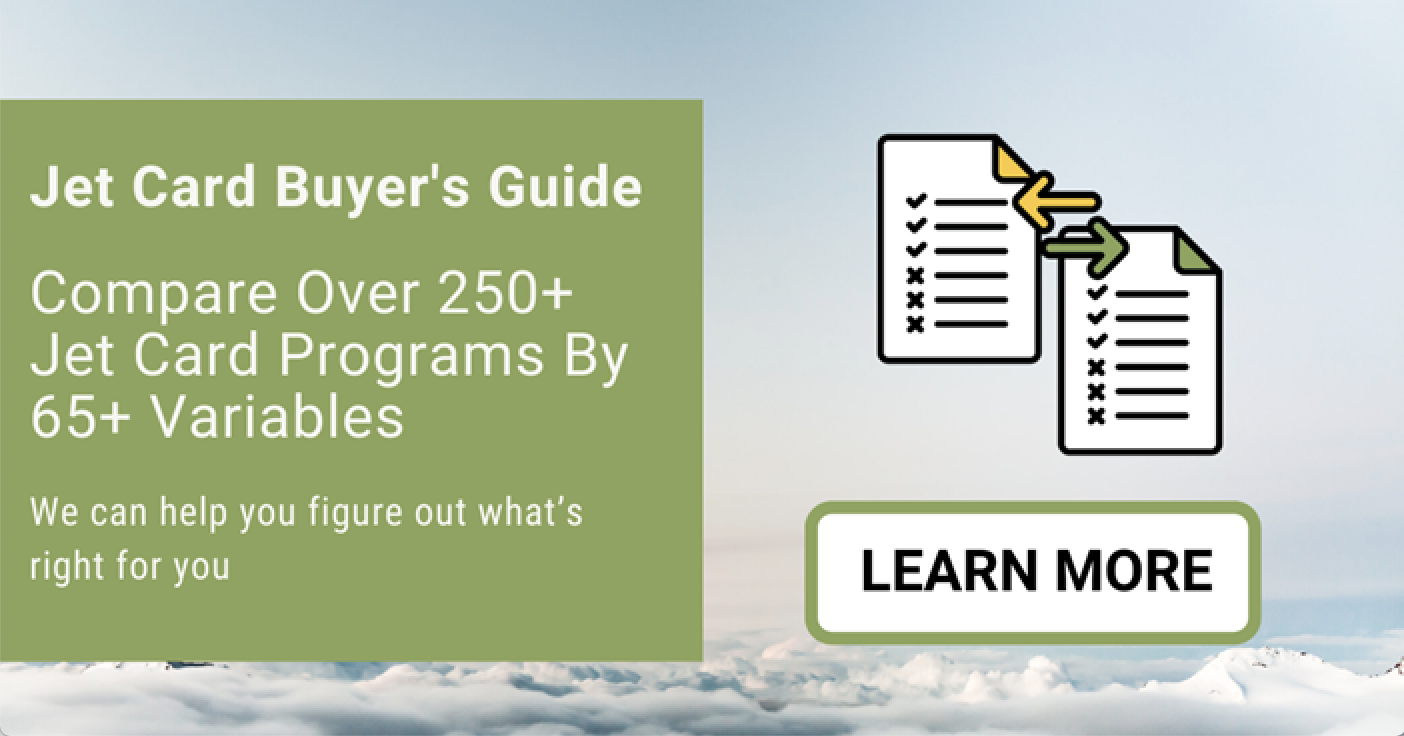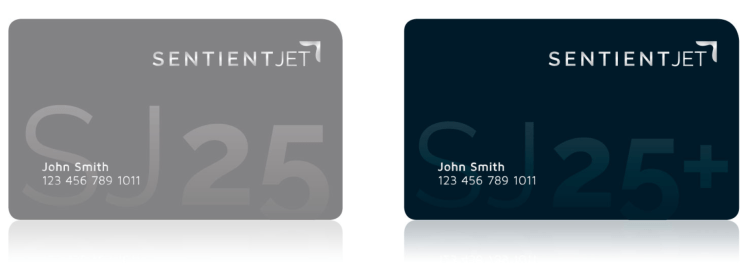
While a one-off short flight on a light jet might be had for as little as $5,000, you can also buy a new $70 million ultra-long-haul private jet. We look at the options, including full ownership, fractional shares and leases, jet cards and on-demand charter.

The cost of a private jet varies widely, from owning an entire aircraft to chartering on demand. But what are the options?
Fractional ownership, leases, and jet cards have become popular middle ground, providing convenience and consistent experience in many ways and offering the best of either full ownership or on-demand charter.
However, figuring out the right solution isn’t necessarily based only on flight hours. Current U.S. tax benefits of full or fractional ownership can tilt the scale in their favor, particularly if most of your flying is for business.
Below is a summary of the various options to access private aviation.
While a new ultra-long-range private jet like the Gulfstream G650 or Bombardier Global 7500 costs upwards of $65 million, the price of the best-selling Phenom 300 light jet is only around $9.5 million.
The used market provides value if you are willing to upgrade avionics and are either happy with the interior design or spend the money to customize the cabin to your needs.
Brokers of used aircraft say that engine technology advances have brought marginal efficiency increases, so getting a great deal on your purchase of a used jet can more than offset higher operating and maintenance expenses.
Conklin & de Decker says that an older Global Express with a range of over 5,900 nautical miles can be had for $8.3-$14 million. A 2006 Gulfstream G550 is currently being advertised for $17,950,000. A 2005 Learjet 60 with 4,938 hours is on the market for $1,595,000, and for older, small jets, you can find prices as low as $250,000.
Of course, older jets require more maintenance and frustration when parts might not be as readily available for newer models.
In the U.S., new tax laws allow you to pay up to 100% of the purchase price in the first year, but there is a fine print. The tax break is tied to business travel usage, which needs to be more than half your flying.
Brokers will also say there is less stress about depreciation with used aircraft compared to buying new ones. If you shop near the bottom of the market, you are probably close to the floor, which would be the break-up value of your plane for parts.
It’s your jet to go where you want when you want. You can leave your stuff on it, and you don’t have to worry about operator policies. Bring your pet or light up a cigarette. The smoking light is always on if you want. If black is your color, as Mick Jagger sings, paint it jet black.
You also aren’t subject to your pilots’ duty time regulations, not that anyone should be flying with tired pilots. You will also be able to land your airplane at short runway airports that meet manufacturer minimums. Charter and fractional operators held to higher safety standards than Part 91 won’t go.
Full ownership is also popular with owners who are also pilots and want to be at the controls, which other options don’t generally offer.
Private jets break, and when yours does, you’ll have to dig into your wallet to fix things. You also have to decide how you want to crew your aircraft. Are you OK with contract pilots, or do you want your own flight crew? What type of training do you want to provide for them? It’s on your tab. For one aircraft, you typically will need at least three pilots to account for vacations and illness.
You’ll also have to hire a management company, and you will pay a monthly fee for them to oversee operations, including complying with ever-changing government rules and regulations. Older jets are more likely to be the subject of compliance updates, which could set you back into six figures.
In addition to buying fuel and insurance, you’ll also have to pay hangar or parking fees to base your jet somewhere. When you are traveling overnight, you’ll have to pay for your pilots’ accommodations and expenses.
If you are going to Aspen for a week, do you want them to drop you off and fly home empty, or do you want them to stay on location at your expense, plus parking costs for the airplane?
Remember, when your jet is in the shop or if your jet doesn’t fit your mission, you will need an alternate solution, so you will probably need to buy a jet card or charter at some point during the year.
While in the past, the common wisdom was that full ownership really only made sense if you were flying at least 400 hours per year, some used aircraft programs believe in certain cases; the numbers can work at as few as 50 to 100 hours per year.
There are management programs like Jet Linx Aviation, Jet Edge, Jet Aviation Solairus Aviation, and Delta Private Jets that offer turnkey solutions and generate charter revenues that can offset some of the owners’ expenses. They’ll also give you access to their significant fleets when your aircraft is down, which is another point.
Sometimes, you don’t know you have a mechanical until your pilot gets into the cockpit and some light on the dashboard that should be on isn’t or isn’t on and should be. It’s days like that, and you might wish you had bought a fractional share or jet card.
Fractional ownership via national providers such as NetJets and Flexjet or regional players like Airshare, Northern Jet, and PlaneSense can allow you to buy a share of an aircraft by committing to as few as 50 hours per year. However, it’s not uncommon for customers to buy multiple shares of different types.
In addition to your share cost, you will pay your provider a monthly management fee and then an hourly rate for actual flight time, plus an hourly fuel charge, which varies based on market prices. Depending on the program, you will pay 12 minutes of taxi time per segment, something you will find with most jet cards.
You also choose a specific aircraft type, so unlike jet cards, many of which sell by cabin category, you will know the plane type you are getting. However, NetJets says it ends up upgrading about 30% of flights for operational reasons.
Fractional ownership provides several benefits over full ownership, starting with a lead time of as little as four hours to reserve a flight, possibly faster than you can get your own pilots moving.
This brings up a key benefit, and that is everything is taken care of for you. You don’t have to worry about hiring and firing, maintenance cycles, permits to fly to international airports, or complying with government regulations. It’s a bit like staying in a suite at a Ritz-Carlton versus renting a vacation home, which might be nice, but you have to make sure somebody stocks the fridge and so forth.
You also don’t have to worry about pilot training programs. You have to compare each program before you buy it. They do have different approaches to how they crew flights.
Most share providers configure each type of aircraft they operate the same to get a consistent experience. What’s best is that if there is a mechanical, your provider will get a replacement at no extra expense.
I used to work for a NetJets owner, and I remember one meeting we were having at the airport. As we were sitting in a conference room looking out the window, we saw our plane being pushed from its parking spot. My principal’s PA went out to see what was going on. It turns out that when we landed, there was an issue with our plane, and within an hour, NetJets had flown in a replacement and had already transferred all our luggage to the new aircraft. If we had chartered or had our own plane, we would have needed to find a last-minute replacement, probably at a high cost.
You also don’t have to worry about ferrying your plane somewhere if there’s not enough parking space but be sure to research the primary service area for the type from your provider, as when you fly outside, you may have to pay for the crew and aircraft repositioning.
Oh, and by the way, another benefit to a lease or share is typically, you will be able to use your hours at an exchange rate for any aircraft in the fleet, so even if you have a share in a large cabin jet, you can trade down to a light jet if it’s in your provider’s fleet. So, in other words, take a look at the entire fleet before you sigh.
On peak days, your provider typically can move your flight by as much as three hours either way from your requested departure time. In contrast, with your own jet, you tell the pilots when you want to go, and you go, excepting slot controls during events like the Super Bowl or at congested airports, to which there are often alternatives.
Contracts typically run from three to five years, so if you are buying 100 hours per year, make sure you will need them for that time period.
You will also have to manage your hours as, typically, only a limited number of hours can be rolled over. Flexjet has an intranet for owners who want to buy or sell hours to other members. About 10% of subscribers here are fractional owners who needed more hours or didn’t want to burn their hours for other aircraft types at the exchange rates providers offered.
One curious element of fractional ownership is you won’t actually know how much you were paying per hour until after you sell your share at the end of the contract.
That’s because residual value is based on the market when you sell, so if you bought an eighth share of a $40 million aircraft, and five years later, when your share expires, its value is $20 million, you would have to amortize the difference in the purchase price and selling price – in this case, $2.5 million – over your flight hours.
However, if the sale price was $30 million or $10 million, looking back, your hourly cost might have been different than you anticipated when you signed up.
The number of jet card providers has doubled since the Great Recession, and for a good reason. Like fractional ownership, most provide guaranteed availability and one-way pricing. However, you can buy time in increments of as little as 10 hours, although most people buy hours in chunks of 25 to 50 hours at a time. Of course, you can buy 100 or 150 hours, too, typically getting a lower rate based on volume.
While the provider takes money out of your account each time you fly, like a debit card, jet cards don’t have a long-term commitment. After you use your hours, you either buy a new card or you don’t. Some jet cards also include deicing, and most don’t have fuel surcharges.
Proponents say that because new customers for private aviation services are hard to find, jet card providers are incentivized to provide a level of service that makes you want to renew.
Jet cards source the aircraft you will fly on either through fleets they own or manage or as brokers buying time via third-party operators. Each provider has different rules covering their program.
We’ve identified more than 60 variables in addition to the hourly rate. Some programs won’t guarantee pets. Not all have guaranteed Wifi. Peak days and surcharges vary widely, and while several programs only require a lead time of 8 to 24 hours, on high-demand days, that can be up to a week.
Primary service areas also vary, and while most cover the continental 48 states, coverage of Canada, Mexico, and the Caribbean vary, and some are even regional. Still, some programs include flights between the U.S. and Europe or Asia.
Instead of having to call multiple brokers and then review various quotes, then figure out the standards of operators being offered, by comparing the standards of your jet card provider before you buy, the booking becomes fast – as in one call, email, text, or even via an app with providers such as Sentient Jet, Wheels Up, and VistaJet.
Most programs also allow you to upgrade or downgrade cabin size on a flight-by-flight basis, so it’s like having an entire fleet of planes at your disposal.
Fixed one-way rates mean you don’t have to worry about ferry fees, as with on-demand charter, and guaranteed availability allows you to budget your spending in advance, unlike on-demand charter, something that can be valuable to CFOs.
Jet cards are also an asset-light approach, so most companies post jet card usage for travel and entertainment, providing a stealthy way to access private aviation.
Many programs sell cards by category, meaning if you request a midsize jet, you might get several types in various configurations. It might mean if you have eight people in your party, you have to choose a midsize cabin category to ensure you will get a plane that will fit everybody. Some providers only guarantee seven seats for midsize aircraft. The same goes for other cabin categories.
You also have to do due diligence before you buy it. A program that’s great for one user might not work for somebody else. A great example is Nicholas Air, a provider about which I generally get nothing but positive feedback. However, if you are regularly flying outside its PSA, get ready to pay a 50% surcharge.
Also, jet card providers range from Fortune 100 companies like NetJets (Berkshire Hathaway) and Jet Aviation (General Dynamics) to boutique brokers, sometimes with less than 10 employees and in many cases where the owner is the CEO.
You’ll want to consider escrow accounts if you can’t ascertain the financial strength of the provider. Still, beyond that, you need to make sure you are comfortable with your provider’s standards for sourcing aircraft and flight crew and make sure the policies fit your needs.
While your friend may love his provider, perhaps he doesn’t fly on peak days where surcharges can range up to 40% or outside the primary service area where surcharges can go to 50%, or you might need a custom quote for each flight, including ferry fees and other expenses. Comparing before buying is a key benefit of subscribing to Private Jet Card Comparisons.
You’ll also want to decide what type of company works best for you. Do you want the surety of a large provider with lots of resources, or is it more important that you can talk to the owner, who has the ultimate power to make you happy or not? If you are having trouble deciding, some programs offer refund options to encourage trial.
Chartering trip by trip provides the ultimate in flexibility when traveling privately. Good brokers can often get you a plane that fits your requirements within an hour, and since you are doing it trip by trip, you don’t have to tie up your capital in ownership or even prepayment of jet cards, although some cards such as Jet Linx and Wheels Up offer pay-as-you-go options.
The on-demand charter also enables you to get the exact type of plane you want for every flight. If you want a year G450 in a specific age range, your broker can get it. You can also choose aircraft within a type based on the configuration you like best. If you want a divan instead of club seats, your broker can find it. If there are specific operators you like, you can go to them, so in other words, you get a lot of control over each trip.
Of course, the more criteria you give to your broker, the more likely you will pay. Requesting a Phenom 300 less than five years old with WiFi and a fully enclosed lav that allows pets might be twice as much as simply requesting a light jet that seats four and can fly you from Teterboro to Charlottesville. In the latter case, you might find yourself on a 40-year-old Learjet with only a curtain to pull around the potty.
Like massage therapists, lawyers, doctors, and accountants, not all charter brokers are created equal. If you have a good one, make sure to send him or her a nice holiday present.
However, like most professions, most of the talent is somewhere in the middle, many attracted by what they consider the industry’s glitz, some with very little experience. The value is often more the broker than the brokerage, although larger brokerages have some very good brokers. You’ll also find that star brokers eventually set up their own boutique shops. I find brokers who are or were also pilots to be extremely helpful.
If finding a great broker can be a tortuous task unless you have total confidence in him or her, buying an on-demand charter means reserving at least an hour per trip to make the arrangements, particularly if you care about checking operators and tail numbers to make sure what you are buying, meets your standards.
Also, each aircraft with each operator may have different terms for payments and cancellations, including whether or not you can bring pets. You’ll also have to pay for ferry fees, so if you are flying to, from, or between airports without many Part 135 aircraft based there, chances are you will pay extra.
Floating fleet operators like XOJET, Dumont Group, Delta Private Jets, and now Jet Edge with its GIV fleet might offer some well-priced options, but a lot depends on when and where, so from trip to trip, expect variations. Deicing and catering are also extras, both of which are included in some jet cards.
If you do many same-day roundtrips, an operator based at your local airport might provide some low-cost options as they can fly you out and back with the same crew as long as it fits within the 14-hour duty time. Jet cards often offer discounts for qualifying roundtrips, in one case, as much as 40%.
That said, unlike jet cards and fractional ownership, if there is a last-minute mechanical or sick, in most cases, you or your broker will have to find a replacement aircraft at your expense, which depending on where you are and where you are flying, can double charges and add significant delays.
In terms of the epic debate between on-demand brokers and sellers of jet cards, while on-demand brokers will typically say they can beat jet card rates, you might find the savings from three trips gets eaten up on a requote for the trip where something goes wrong. My research says when it comes to price, it goes about 50-50 either way.
The Jet Card Decider service from Private Jet Card Comparisons can help you figure out which solution is right for you.




